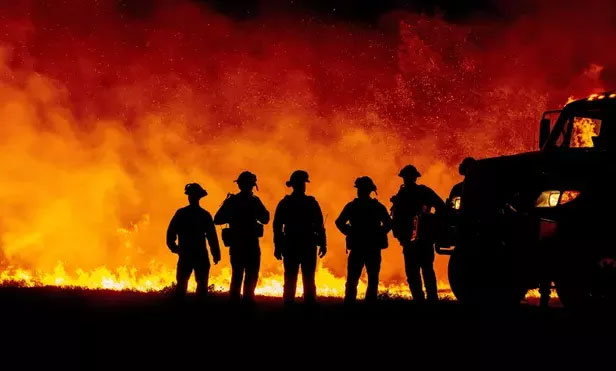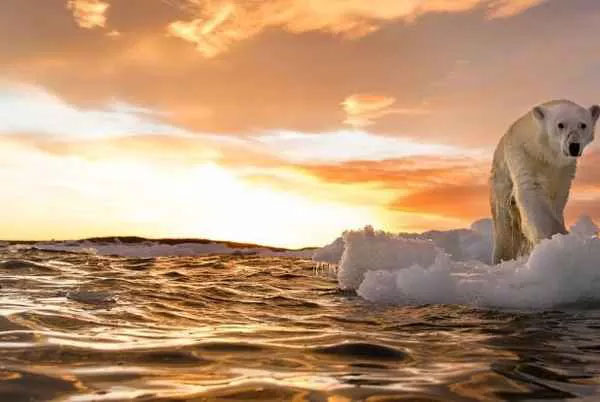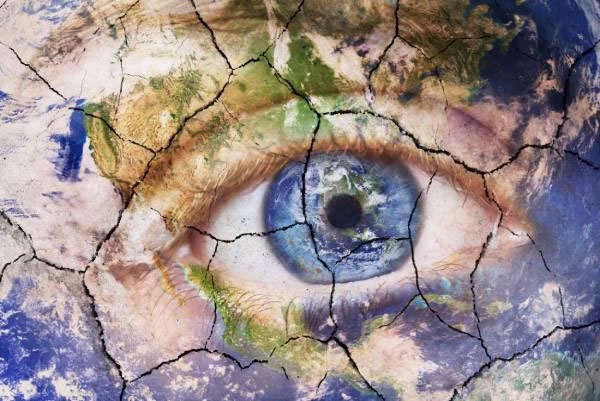Scientists recently warned that humanity may face an unexplored extinction risk.
According to a recent analysis of the extinction risk to humanity, climate scientists have cautioned that this danger remains largely unexamined. The new analysis was published in the Proceedings of the National Academy of Sciences and has been reviewed by dozens of scientists.
Experts refer to this disaster as the “climate endgame”. Although the likelihood of occurrence is low, the uncertainty surrounding future emissions and climate systems means that the prospect of humanity facing a catastrophic flood cannot be ruled out.
Scientists warn that, in the face of an accelerating future of climate change, there are many reasons to doubt that global warming could lead to apocalyptic disasters.
For this reason, the group of international experts believes that the world must begin preparing for the possibility of a climate war. According to the experts, analyzing the mechanisms that cause these extreme consequences could help drive action and improve resilience, while also informing policy.

Climate change is one of the causes of many wildfires. (Photo: Getty Images)
In this new analysis, scientists also proposed a research program, including four main issues they refer to as the “Four Horsemen” of the climate endgame, which include: famine, extreme weather, war, and disease.
In fact, scientists have called on the Intergovernmental Panel on Climate Change to produce a special report on this issue.
Dr. Luke Kemp at the Centre for the Study of Existential Risk at the University of Cambridge, who led the analysis, stated: “There are many reasons to believe that climate change could become catastrophic, even if the temperature increase is within a small range.”
This expert emphasized that evidence shows climate change has played a role in every mass extinction event. It is also considered one of the factors leading to the collapse of empires and shaping history.
The pathways to disaster are not limited to the direct impacts of high temperatures, such as extreme weather events. Moreover, chain reactions like financial crises, conflicts, and the outbreak of new diseases can cause further disasters.
However, the analysis by climate scientists also indicates that the consequences of global warming exceeding 3 degrees Celsius have not been clearly studied, and there are very few quantitative estimates of the overall impact.
Scientists note that thorough risk assessments will consider how risks propagate, interact, and amplify. However, this has yet to be done. For example, assessing the impact of a tornado that destroys electrical infrastructure could leave people vulnerable to a subsequent deadly heatwave.
Nevertheless, according to scientists, a particularly important issue that needs attention is the critical thresholds within the climate system. So, what is a critical threshold?
According to experts, a critical threshold is the point at which ecosystems, climate, etc., change to an irreversible state, even if humans do not harm the environment or increase carbon emissions at that time. For instance, if we exceed a critical threshold, carbon-absorbing areas of the Earth, such as the Amazon rainforest, could suffer from severe droughts and wildfires.

Humanity faces the risk of extinction in the future due to climate change. (Photo: Getty Images)
Researchers warn that critical thresholds can lead to domino effects, triggering other thresholds. In fact, some remain poorly studied, such as the sudden disappearance of stratocumulus clouds, which could cause Earth’s temperature to rise by an additional 8 degrees Celsius.
Additionally, researchers have warned that climate change could exacerbate vulnerabilities such as water scarcity, crop failures, and poverty; or trigger other disaster risks, such as pandemics and international wars.
The analysis by experts also suggests that one day, superpowers may experience conflicts over geoengineering plans (a new term referring to ideas for cooling the Earth using techniques that directly impact the planet to address climate change), or carbon emission rights.
Therefore, if the current “fragile” situation is not significantly improved in the coming decades, a zone of instability with the potential for serious divisions may arise.
Scientists emphasize that climate change plays a crucial role in the collapse or transformation of many past societies, particularly during the five mass extinction events in Earth’s history.
Notably, the new model in this analysis indicates that extremely high temperatures (defined as an average annual temperature above 29 degrees Celsius) could affect 2 billion people by 2070 if carbon emissions continue to rise as they are now.
According to researcher Chi Xu at Nanjing University, China: “Such high temperatures are currently affecting about 30 million people in the Sahara and the Gulf Coast.”
Forecasting the “scenario” of the sixth mass extinction on Earth
Recently, a study by climate scientist Kunio Kaiho from Tohoku University, Japan, published in the journal Biosciences, forecasted the sixth mass extinction event. According to this expert, the sixth mass extinction on Earth will not be as catastrophic as the previous five.
When analyzing the relationship between the stability of Earth’s average surface temperature and biodiversity, Kunio Kaiho discovered that extinction rates rise as temperatures change.

Expert predicts the sixth mass extinction on Earth. (Photo: Getty Images)
In fact, the largest mass extinction events during global cooling occurred when temperatures dropped by about 7 degrees Celsius. However, according to this expert’s estimates, during periods of global warming, the largest mass extinctions occurred when temperatures rose by about 9 degrees Celsius.
This figure is significantly higher than previous predictions. This indicates that if temperatures increase by 5.2 degrees Celsius, it would cause mass extinctions in marine ecosystems equivalent to the levels of the previous five mass extinctions.
According to a United Nations report, global warming is projected to increase Earth’s surface temperature by up to 4.4 degrees Celsius by the end of this century.
However, according to Kunio Kaiho, using only surface temperature makes it very difficult to predict the intensity of extinction caused by humans in the future. The reality shows that the causes of human-induced extinction differ from those of geological mass extinctions.
The consequences of climate change are causing many land and marine species to go extinct, even though the researcher did not foresee the extent of past damage.
Today’s global warming is occurring over a much shorter timeframe due to human emissions of greenhouse gases. This could lead to many species facing extinction during the sixth mass extinction on Earth. The reason is not that the level of warming is too great, but because the changes are occurring too quickly for many species to adapt.
Have humans nearly gone extinct?
Humans have experienced periods of significant population decline, even coming close to extinction.
Humans (Homo sapiens) have existed for about 300,000 years. During this long period, humans have significantly increased in both territory and population. However, life on Earth has not always been easy. According to experts, there have been several moments when humanity faced the risk of extinction. Why?

Humans have experienced many significant population declines. (Photo: Geekys)
Specifically, one of these events occurred about 190,000 years ago when Earth entered an ice age. During this period, the planet became largely cold and dry. This led to the formation of glaciers and ice deserts.
This icy condition lasted for about 60,000 years. Notably, as habitable areas shrank, so did the human population. According to estimates by some geneticists, the number of reproductively capable humans decreased from about 10,000 to only 600.
Many of these individuals reside along the southern coast of Africa. This region is rich in carbohydrate-rich plant species, protein-rich shellfish, and warm ocean currents. As a result, this group of people seems to have thrived.
In particular, one woman, a member of this group, has been referred to by scientists as “Mitochondrial Eve” of humanity. This woman contains the mitochondrial DNA lineage of all modern humans and has become the common ancestor of humankind.
However, since that time, genetic mutations and variations have accumulated. This phenomenon has led scientists to establish genetic lineage diagrams.
Specifically, during their research, experts found that, compared to other animals, humans do not exhibit significant genetic differences. Instead, they believe that this is the result of a substantial population decline.
This decline is estimated to have occurred around 70,000 years ago, when only about 2,000 individuals survived.
The actual causes of this human population decline remain a subject of considerable debate.
According to older hypotheses, the eruption of Mount Toba in Indonesia was the cause. This event released 2,800 cubic kilometers of ash and lava, obscuring the Sun and triggering an ice age. However, subsequent studies have indicated that humans were not significantly affected by this event.
Regardless of the cause, the human population managed to recover. Furthermore, the population reached 1 million around 12,000 years ago. Experts predict that the Earth’s population will reach 8 billion by 2022.





















































